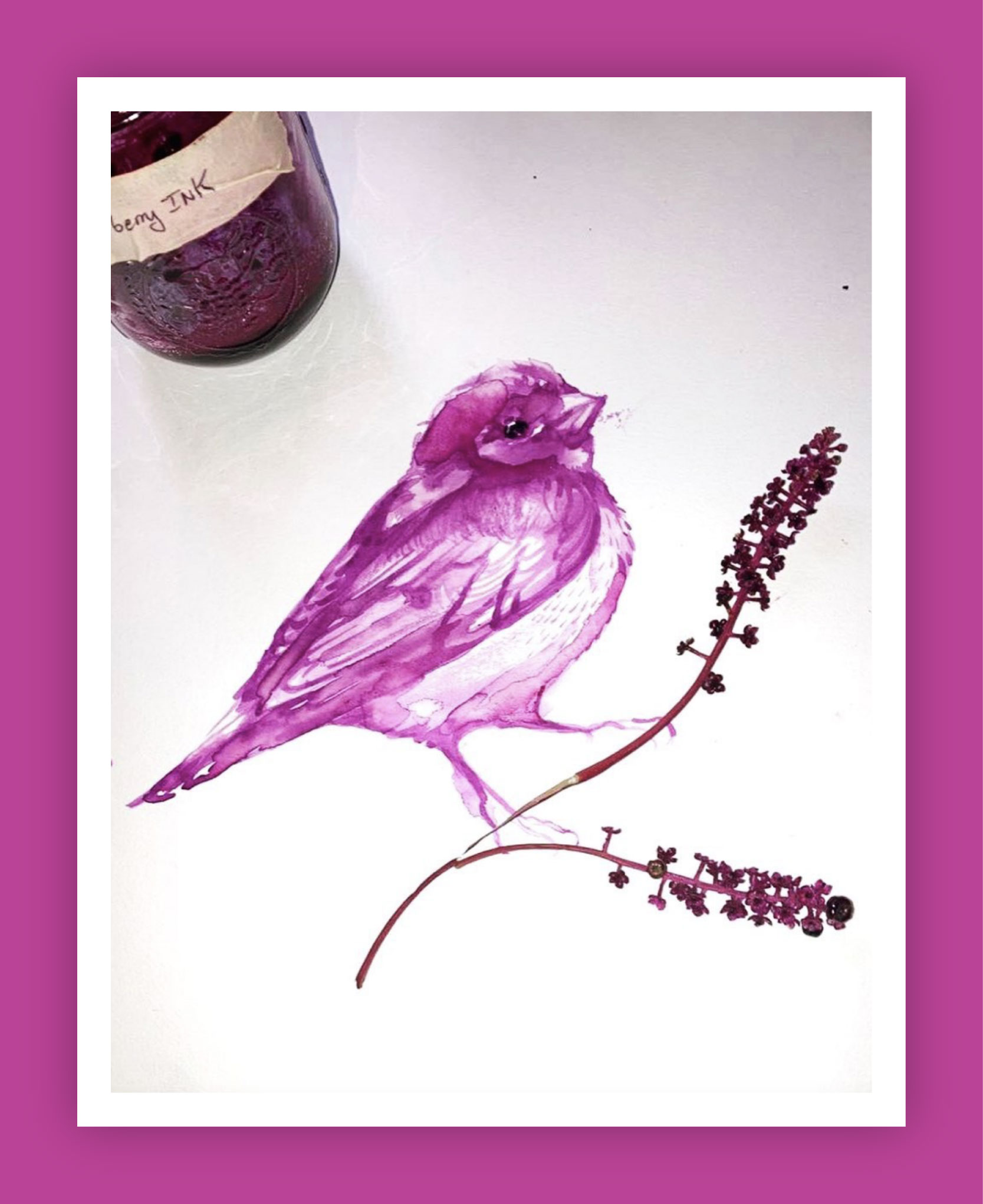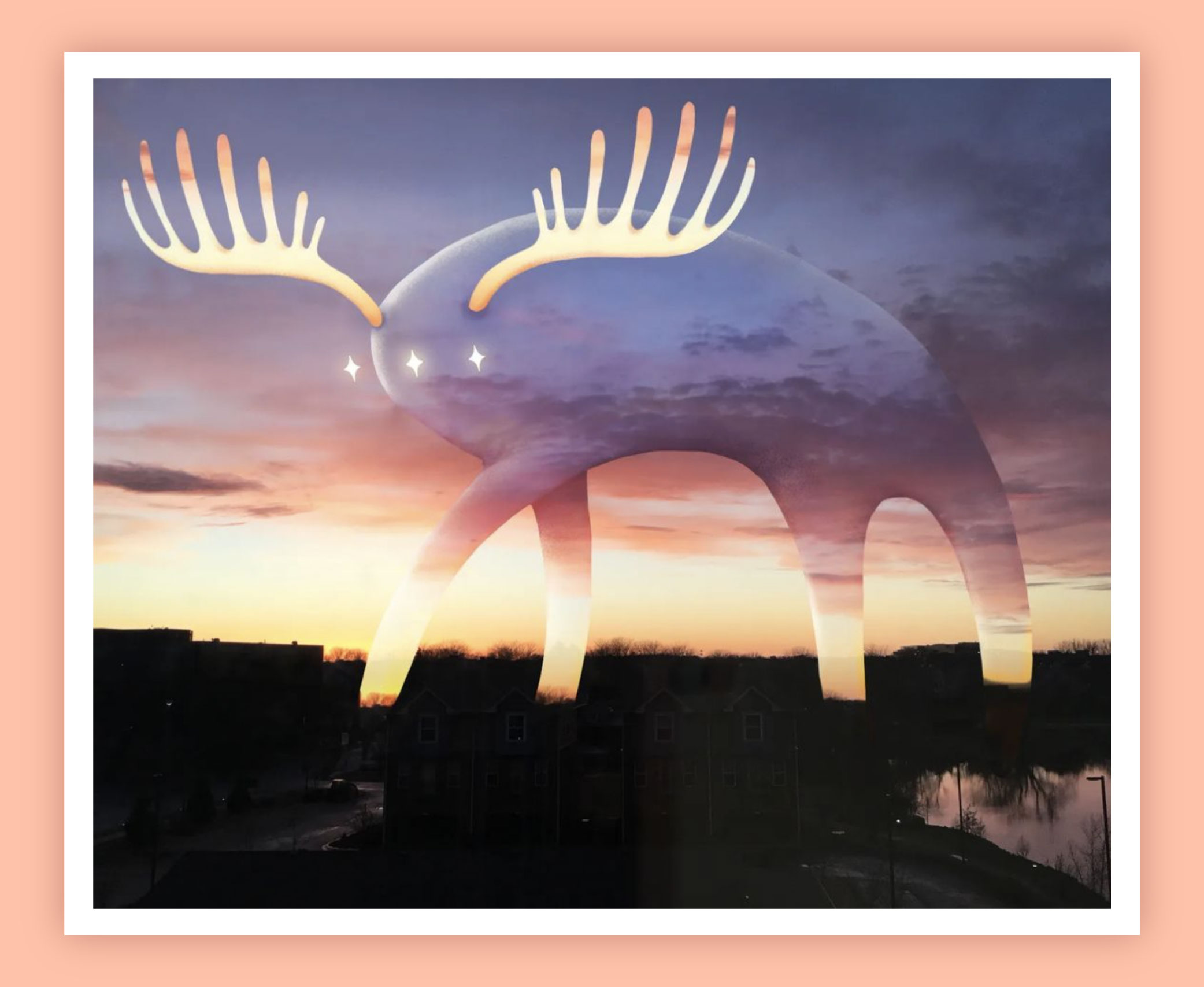Nature by Design

October is my favorite month of the year, and yes, Halloween is BIG part of it (I love everything spooky). But the highlight of the season—the ‘grand finale’ as I like to call it—is the glorious buffet of nature. The warm ombre of trees, the leaves crunching under your feet, the taste of sweet apples and the sprouting mushrooms. Autumn is the perfect time to go outside, breathe in the crisp air and reinvigorate your sense of creativity with some new art techniques.
Especially if you’re a designer… or a hobbyist… or anyone living in the 21st century… you might feel the need to step away from the screen and enjoy the outdoors before the Chicago winter creeps in. Here are a few ways to combine nature and art into something fun, surprisingly easy and satisfying.
Natural Ink
Start by gathering your supplies. Watercolors, acrylics or an iPad are all good and dandy—but have you tried pokeweed? Pokeweed is a big, woody weed that grows in poor soil and boasts a dark black berry, known as pokeberries or inkberries. Although they look appetizing, they are not meant to be eaten. Instead, as the name suggests, try using them as ink! They exhibit a beautiful magenta and have a rich history of being used as a natural ink.

Photo Credit: Andrew L Hegdahl on Shutterstock
“Native Americans are said to have decorated their horses with it. Early settlers placed fermented pokeberries in a hollowed-out pumpkin to prepare a concoction used to color cloth.
The next time you go to a museum and see letters and journals written during the War Between the States, any writing that appears to be penned with brown ink was probably done with pokeberry ink, which turns brown with age.” georgiawildlife.com
I enjoy using the rich inkberry hues like watercolors and I’m always delighted with how vivid the colors turn out. To ensure your painting maintains its vibrancy, you’ll want to keep it out of the sun.

Stencils & Stamping
Now that you have your ink, it’s time for some painting and print making! Gather your favorite leaves and flowers and begin experimenting with the negative space and lovely contours nature provides.

Another exciting technique allows you to use actual flowers as your dye! My friend Elizabeth King (@fabbyecochic) creates stunning organic patterns by pressing flowers and leaves onto natural fibers, resulting in breathtakingly beautiful pieces. Check out her Instagram to learn more about her textiles and print workshops.

Textures to Try
Speaking of natural patterning, another gift offered by nature is 100% FREE textures—that’s right, Mother Nature doesn’t charge royalties! If you have a decent camera, you can embrace nature’s never-ending textures to enhance your digital designs. Go for an early morning walk and see what you can find! Glistening spider webs, intricate tree bark, autumn leaves, rusty metal and moss-covered stones are just a few ideas.

Color Palette Creation
Nature is the original designer, and she doesn’t mind if we steal her pigments and shades. So go nuts (literally—some nuts have beautiful earthy tones)! Seek out fall foliage, gourds, bugs and birds to inspire your color palette.

Reimagine your Landscapes
A unique way to play with outdoor photography is to digitally paint your subjects into real landscapes. This is a fun way to explore mixed media and challenge yourself to make your subject look as natural as possible—and if you’re anything like me, you’ll enjoy not having to worry about the background. Your photo doesn’t even need to be fancy, a simple shot out your window can result in something very cool.

Another design trick is to digitally remove a portion of your photograph’s background and use it as the structure for your subject or character. Add a little shading and highlights, and you end up with a masterpiece that blends the natural with the fantastical.

Give Plein Air Painting a Try!
One of the best ways to grow as an artist is to study. Rid your brain of any pre-conceived notions of what you think trees or clouds are supposed to look like—simply look and capture. This practice is called Plein Air painting and is derived from the French expression “en plein air,” meaning “in the open air.”
Plein air painting refers to the act of painting outdoors with your subject in full view. It is both meditative and grounding, as well as a fun way to challenge yourself to quickly capture the scene in front you—especially when your camera fails to do it justice.

At the end of the day, you don’t need to be an artist to enjoy all the beauty that nature has to offer. But if you do feel the itch to create, try out some of these methods and discover a whole new world of possibilities!
Promoting Your Company Culture
8 Inspiring Newsletters to Help Take Back Your Inbox
Respect the Process








